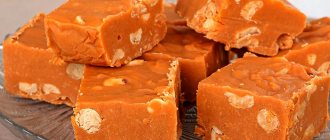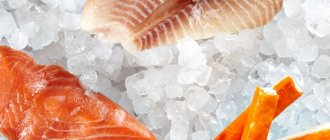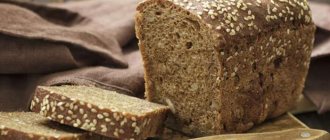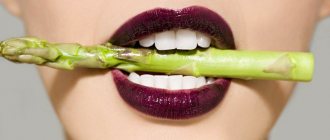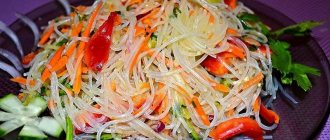The word sherbet has several different meanings. In ancient centuries, sherbet was a vitamin-rich oriental drink made from pink flowers, rose hips, spices and licorice. Nowadays sherbet is called a soft drink consisting of juices of berries and fruits, with the addition of honey, sugar, spices and spices. Turks and Arabs drink this drink before and after meals. Brides in villages in India, Afghanistan and Turkey drink pink dessert when accepting marriage proposals. Oriental sherbets have many flavors - lemon, apple, orange, pomegranate, quince, dogwood and others. The Egyptians add selected violets, mulberries and sorrel leaves to sherbet.
Those with a sweet tooth know this dessert in the form of fruit ice cream or a fragrant oriental sweet delicacy.
Properties of sherbet
How much does sherbet cost (average price for 1 kg)?
Moscow and Moscow region.
190 rub.
The word sherbet or sherbet , as well as sorbet, has not only different spellings, but also several meanings. Firstly, sherbet refers to an ancient oriental vitamin drink based on rose hips, rose flowers, licorice and spices. Nowadays, sherbet is a soft drink made from the juices of fruits and berries, with the addition of sugar, honey, herbs and spices.
Secondly, to all those with a sweet tooth, sherbet is known as fruit ice cream or a fragrant oriental sweet delicacy. It’s the last type of sherbet that we want to introduce you to today. Sherbet received its distinctive name thanks to the Turkish language and the word Şerbet, which has analogues in other languages. For example, Persians, Urdu people and Arabs call sherbet sharbat.
Sherbet - soft drink
Sherbet is a drink that helps maintain good immunity.
The word "sherbet" comes from the Arabic sharba, which means drink. It has been prepared in eastern countries for thousands of years. There it is consumed everywhere as a regular soft drink, at the festive table, and plays an important role in some rituals. In ancient times, sherbet was considered a drink of love; fruits and spices with aphrodisiac properties were added to it. Doctors endowed the drink with healing properties.
Traditionally, sherbet is prepared from rose hips, licorice, dogwood and rose petals with the addition of various spices (cinnamon, cloves, ginger, etc.). In European countries and all over the world, apples, quinces, plums, grapes, cranberries, mulberries or any other fruits and berries are used to prepare the drink. They are boiled to a puree, to which spices, water infused with rose petals, citrus juices and sugar are added. The drink is filtered and served chilled, sometimes ice cubes are added to it.
This drink not only perfectly quenches thirst and gives strength, but also saturates the body with vitamins. The beneficial properties of sorbet, of course, depend on what fruit it is made from. A glass of traditional sherbet, made from rose hips and rose petals, contains vitamin A and carotenoids, ascorbic acid, organic acids, essential oils and many other useful substances. This drink is an excellent way to maintain good immunity.
You can drink it to cleanse the body, it helps to get rid of excess weight, and will help with dysbacteriosis and other problems with the digestive system. The calorie content of sorbet may vary depending on what products are used to prepare it. Typically, 100 g of drink contains no more than 100 kcal. In order for the drink to be truly healthy, you should not add sugar to it.
Sparkling sherbet
In the 19th century, a powder was invented in Europe that, when dissolved in water, produces an effervescent fruit drink. It was also called sherbet. Obviously, this drink has practically nothing in common with traditional oriental sherbet except the name. And its benefits are questionable, since the components of the powder, in addition to fruit concentrate, are sugar, carbonates, citric, less often malic or tartaric acids obtained by chemical means, dyes and flavors.
Composition of sherbet
In terms of its composition, sherbet is classified as a sweet, and according to its consumer and taste properties, the product is classified as candy. The composition of sherbet includes various products, which depend solely on the national recipe of the dish. However, in any case, sherbet will look like fudge to which various ingredients are added. For example, nuts, vanillin or raisins. Modern sherbet producers use condensed milk as the main sweetening ingredient.
The calorie content of sherbet will also depend on the original ingredients of the product. The average calorie content of sherbet is 417 Kcal per 100 grams of product. Agree, it’s quite a satisfying delicacy. Sherbet remains the most popular dessert in eastern countries. The most popular among Easterners is sherbet with peanuts or groundnuts, which are filled with condensed cream.
Sherbet - ice cream
This popular delicacy is distributed all over the world, but its name in the European style sounds like sorbet or sorbet. Essentially this is a frozen sorbet; when frozen, it turns out to be a rather soft, viscous mass of fruit puree with pieces of fruit, which is served as ice cream for dessert.
Sometimes the fruit mass is not completely frozen, alcohol (wine or liqueur) is added to it and served as a drink. It is often drunk during meals and after meals. It is believed that this sorbet improves the digestion of food, since the fruit puree from which it is made contains a lot of dietary fiber. In addition, this delicacy is a source of vitamins, minerals and other beneficial substances.
The benefits of sherbet
The chemical composition of the product determines both the harm and benefit of sherbet. On the one hand, the product is rich in beneficial substances that are originally contained in the original ingredients. For example, nuts or raisins contain sufficient amounts of vitamins and minerals. Vitamin A, B1, D, PP, as well as biotin and linoleic acid are contained in sherbet.
We can say that the main benefit of sherbet lies in the excellent satiating abilities of sweetness. We think many will agree that it is simply impossible to eat a lot of sherbet, which cannot be said about chocolates, which some people consume in kilograms. In addition, sherbet is better absorbed by the human body and can serve as an excellent and more natural replacement for candy or other sweets.
Composition, benefits and harms of sherbet
A fragrant dessert can consist of various ingredients, depending on national recipes. But you need to be guided by the fact that it will look like creamy fudge with the addition of nuts, dried fruits, vanillin and other spices. The modern recipe includes condensed milk. Therefore, the answer to the question of how many kcal is in sherbet is 417 on average.
To understand the beneficial and harmful properties of this sweetness, you need to study the chemical composition. And he says the following (per 100 grams of product):
- proteins – 7.3 g;
- fats – 14.7 g;
- carbohydrates – 66.2 g;
- vitamins A, B1, D, PP;
- biotin and linoleic acid.
This dessert is perfectly filling and can be a healthy natural alternative to “chemical” sweets.
But at the same time, it is the high percentage of carbohydrates and sugar that gives cause for concern to those who are watching their figure. In addition, sherbet is not recommended for consumption by people suffering from diabetes, liver and pancreas diseases. Expectant mothers and nursing mothers should also eat with caution, as dessert can cause diathesis in the child.
The harm of sherbet
Unfortunately, the harm of sherbet lies in the same chemical composition of the product. In terms of the amount of sugar, sherbet is in the forefront among the most high-calorie sweet products. Such a high sugar content in the confectionery product causes a high level of carbohydrates, which can be a good source of energy or add a couple of extra pounds.
Therefore, you need to consume sweets in reasonable quantities, because... The harm of sherbet can be quite noticeable and not only for a beautiful and slender figure. Sherbet is contraindicated for people suffering from liver or pancreas diseases. Doctors also advise limiting the amount of sherbet consumed during pregnancy and childbirth, because sweetness can cause allergic reactions in the baby. It is best to find a “golden mean”, then sherbet will not cause harm, but on the contrary, it will enrich the body with useful substances.
Types of sherbet, their calorie content
The classic recipe for an oriental sweet is peanuts filled with condensed cream. How many calories are in sorbet with peanuts depends on what kind of thickener was used to prepare the creamy base. Ideally, use agar-agar or thick sugar syrup. In the case of agar, the calorie content will be slightly lower, but not significantly. The calorie content of sherbet with peanuts is 368 kcal per 100 g. product.
Now let's look at the variations. How many calories are in sherbet with nuts cannot be answered unequivocally, because you can use different types of them. The calorie content of sherbet with walnuts will be 417 kcal, but the calorie content of sherbet with hazelnuts will be 420 kcal. This indicator is due to the fact that each type of nut has its own calorie content, which is “shared” with the dessert.
Dried fruits are also used in the recipe. Let's find out how many calories are in sorbet with dried apricots or raisins. After all, this dessert will be very tasty and healthy thanks to dried fruits, which are rich in potassium, calcium and other microelements.
Read also Landscaping in front of a private house
The calorie content of sorbet with dried apricots will be about 365 kcal, and the calorie content of sorbet with raisins will be 390 kcal. Although dried fruits are high-calorie sweets, their benefits are undeniable. This version of sherbet is a good replacement for sweets, including chocolate.
Well, now a logical question for ice cream lovers is how many calories are in sorbet ice cream. We hasten to please you - this is the lowest-calorie dessert of all the sherbets presented, but there is no need to overuse it, moderation is important in everything. The calorie content of ice cream sherbet is 124 kcal.
The East is a delicate matter, and so is oriental cuisine, the dishes of which are known and loved all over the world. And if we talk about their benefits, then it is undeniable, since the original recipe of the dishes dates back to the times of the sultans, who very carefully monitored their health and the health of their harem. But sherbet was a favorite delicacy of numerous wives and concubines.
How to prepare the Sherbet dish
- Pour milk into a bowl, add 3 cups of sugar. Place on low heat and simmer for 30 minutes, stirring constantly.
- Fry the peanuts in a frying pan until golden brown, remove the husks.
- Pour 0.5 cups of sugar into a dry frying pan to make caramel.
- Add the prepared caramel to the milk-sugar syrup.
- Cook the mixture over low heat until tender, stirring occasionally; after an average of one hour of cooking, the sorbet is ready.
- Add butter to the boiled sorbet and stir.
- Take a mold and cover it with foil or baking paper. Place nuts on paper.
- Pour the milk-sugar mixture over the nuts and refrigerate until hardened.
- When frozen, cut into pieces and you can eat.
- Peanuts - 1 tbsp.
- Milk - 1 tbsp.
- Sugar - 3.5 tbsp.
- Butter - 60 gr.
Read also Ball-shaped plants
Nutritional value of the “Sherbet” dish (per 100 grams):
Calories:
368.2 kcal.
Carbohydrates:
55.2 gr.
Ingredients and calorie content of the Sherbet recipe
(calorie content and nutritional value are calculated approximately, excluding boiling and frying)
| Product | Measure | Weight, g | Bel, gr | Fat, g | Angle, gr | Cal, kcal |
| peanut | 1 tbsp | 200 | 52.6 | 90.4 | 19.8 | 1102 |
| milk | 1 tbsp | 250 | 8 | 9 | 12 | 160 |
| granulated sugar | 3.5 tbsp | 560 | 558.32 | 2228.8 | ||
| butter | 60 gr | 60 | 0.3 | 49.5 | 0.48 | 448.8 |
| Total | 1070 | 60.9 | 148.9 | 590.6 | 3939.6 | |
| 1 serving | 54 | 3 | 7.4 | 29.5 | 197 | |
| 100g | 100 | 5.7 | 13.9 | 55.2 | 368.2 |
This is a custom recipe, so there may be errors and typos. If you find them, please write them in the comments below the recipe and we will correct them.
Step-by-step recipes with photos from our website are in the “Recipes” section.
